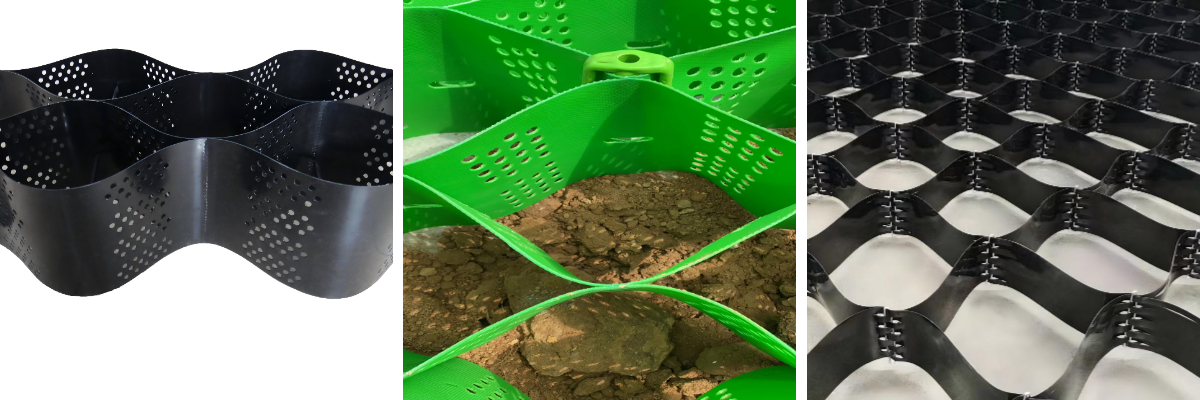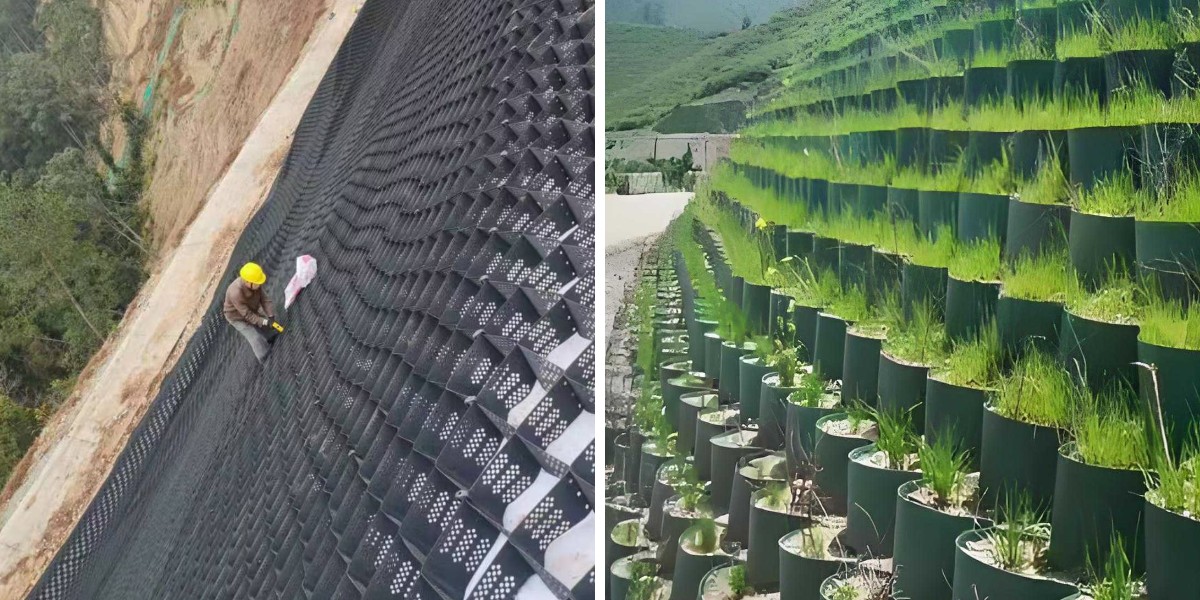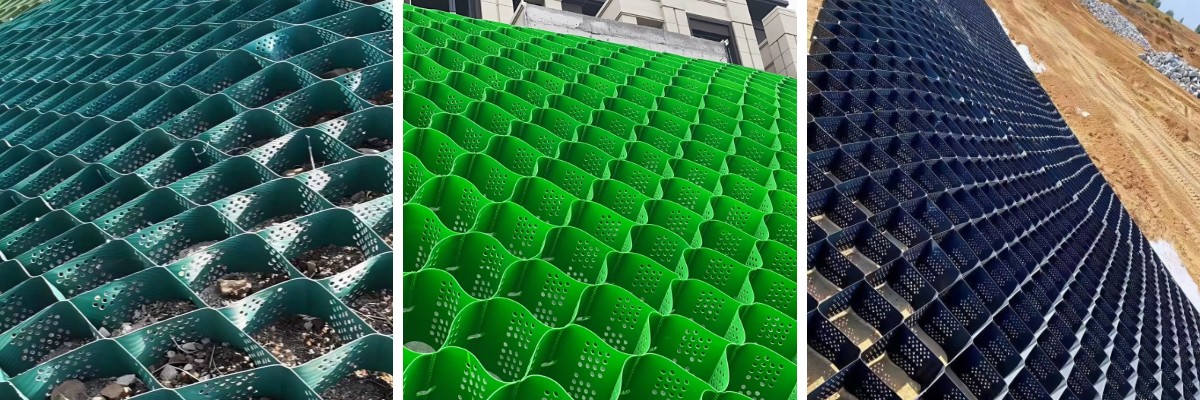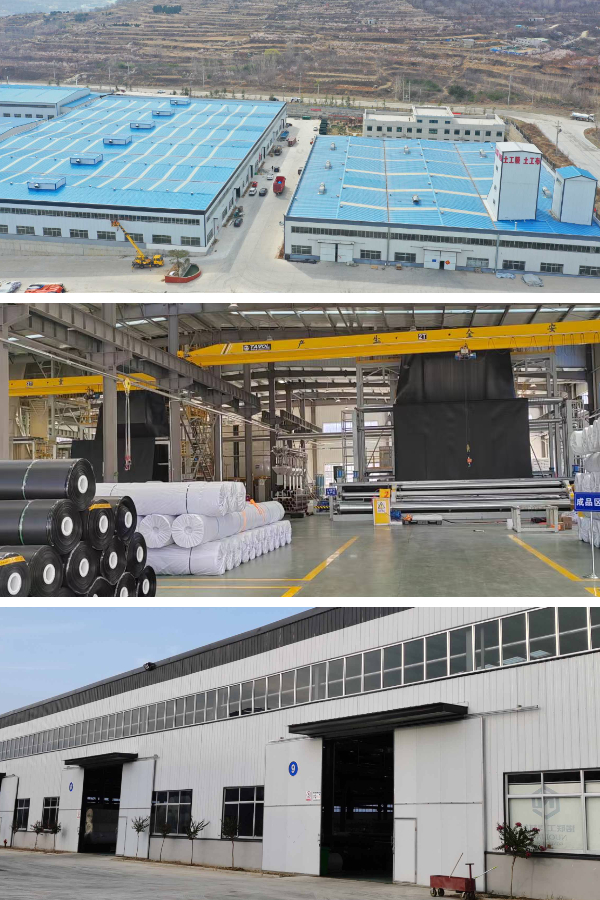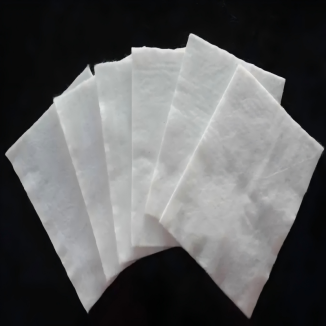How Do Geocells Work for Slope Stabilization? Understanding the Mechanics
Slope instability is a power undertaking in civil engineering, landscaping, and environmental projects—leading to erosion, landslides, and expensive injury to infrastructure. Among the most fine options is the use of geocell technology, a three-d machine that transforms susceptible slopes into stable, resilient structures. But how precisely do these honeycomb-like grids work? This information breaks down the mechanics of geocell slope stabilization, explaining how geocell structures toughen soil, manage erosion, and keep long-term slope integrity. We’ll additionally discover their position in geocell erosion manipulate and why they’re a desired preference for cutting-edge slope projects.
What Are Geocells, and Why Are They Used for Slopes?
Geocells are synthetic, honeycomb-shaped buildings made from long lasting substances like high-density polyethylene (HDPE) or polypropylene (PP). They arrive on-site flat and enlarge into rigid, interconnected cells that are crammed with soil, gravel, or vegetation. Unlike normal slope stabilization techniques (such as concrete partitions or rock riprap), geocells work with the soil to create a composite system—leveraging the energy of each the geocell grid and the infill material.
For geocell slope projects, this graph provides a special advantage: flexibility blended with strength. Geocells conform to the slope’s herbal contour, distributing weight evenly and adapting to minor floor actions besides cracking. They’re additionally perfect for geocell erosion control, as the mobilephone shape traps soil particles whilst permitting water to drain—preventing runoff from washing away the slope’s surface.
The Core Mechanics: How Geocells Stabilize Slopes
Geocell slope stabilization depends on three key mechanical principles: confinement, load distribution, and reinforcement. Together, these mechanisms radically change unstable soil into a cohesive, steady mass.
1. Soil Confinement: Trapping Particles to Prevent Movement
The most fundamental feature of geocells is soil confinement. When the cells are stuffed with soil or aggregate, the inflexible grid partitions avoid the motion of character soil particles. In unstable slopes, soil tends to slide or glide downhill due to gravity; geocells act as a “cage” that holds the soil in place, changing loose, granular fabric into a semi-rigid block.
For geocell erosion control, this confinement is particularly important. Rainwater runoff can dislodge quality soil particles, but the geocell grid traps these particles inside the cells, stopping erosion. Even on steep slopes, the constrained soil stays intact, as the cells distribute the pressure of runoff throughout the complete slope surface.
2. Load Distribution: Spreading Weight to Reduce Stress
Geocell slope structures excel at distributing loads—whether from the weight of the slope itself, vegetation, or exterior forces like foot visitors or equipment. The interconnected honeycomb shape spreads focused masses over a large area, decreasing the stress on any single factor of the slope.
For example, if a tree is planted on a geocell-stabilized slope, the tree’s root ball weight is dispensed throughout a couple of cells instead than urgent down on a small patch of soil. This prevents localized compaction or sinking, which may want to weaken the slope. Similarly, in street embankments (a frequent geocell slope application), the grid distributes the weight of passing motors throughout the embankment, heading off ruts or collapse.
3. Reinforcement: Adding Tensile Strength to Soil
Soil is sturdy in compression however susceptible in tension—meaning it can face up to being pressed collectively however without problems tears or stretches. Geocells add tensile energy to the slope by means of appearing as a reinforcement layer. The artificial grid fabric has excessive tensile strength, so when the slope tries to pull aside (e.g., in the course of minor landslides or floor shifts), the geocells take in the tensile forces and keep the soil together.
This reinforcement is more advantageous when vegetation grows thru the geocells. Plant roots intertwine with the grid and soil, developing a herbal “bio-reinforcement” machine that similarly strengthens the slope. For geocell erosion control, vegetation additionally helps sluggish runoff through absorbing water, decreasing the have an impact on of rain on the slope surface.
Geocell Erosion Control: Beyond Stabilization
While slope stabilization is the fundamental goal, geocells excel at geocell erosion control—a quintessential secondary benefit. Here’s how they tackle erosion-specific challenges:
Filtering & Drainage
Geocells stability soil retention with drainage. The telephone shape lets in water to skip via freely, stopping the buildup of hydrostatic stress (which can push slopes apart). At the equal time, the grid traps soil particles, making sure that solely smooth water drains away. This is crucial for geocell erosion manipulate in wet regions, the place extra water can shortly erode unprotected slopes.
Vegetation Support
As stated earlier, geocells create an best surroundings for vegetation growth. The cells maintain nutrient-rich topsoil, defending seeds from being washed away through runoff. Once vegetation establish, their roots bind the soil and grid together, growing a residing erosion barrier. This makes geocells a sustainable desire for geocell erosion manage in environmentally touchy areas, like riverbanks or wetland slopes.
Installation Steps: How to Implement Geocell Slope Stabilization
Proper set up is key to maximizing geocell performance. Here’s a simplified overview of the manner for geocell slope projects:
1. Site Preparation: Clear the slope of debris, rocks, and vegetation. Level the floor and compact the soil to create a steady base. For steep slopes, installation anchor pins alongside the pinnacle part to impervious the geocells later.
2. Unfolding & Expanding: Roll out the flat geocell sheets alongside the slope. Expand the sheets into their honeycomb shape, making sure the cells are wholly open and aligned with the slope’s contour.
3. Securing the Grid: Anchor the geocells to the slope the use of stakes or pins, beginning from the pinnacle and working downhill. This prevents the grid from moving at some stage in filling.
4. Filling the Cells: Fill the cells with soil, aggregate, or a soil-vegetation mix. Use a rake or shovel to distribute the cloth evenly, making sure every mobilephone is completely crammed however now not overpacked.
5. Compaction & Seeding: Lightly compact the infill fabric to stabilize it. If the use of for geocell erosion control, unfold grass or native plant seeds over the stuffed cells and cowl with a skinny layer of topsoil.
Common Applications of Geocell Slope Stabilization
Geocells are versatile and used in a vary of geocell slope and geocell erosion manipulate projects. Here are the most frequent scenarios:
1. Highway & Road Embankments
Road embankments are regularly constructed on gentle soil, making them inclined to erosion and settlement. Geocells stabilize these embankments via confining the soil and distributing visitors loads, making sure the avenue stays stage and safe.
2. Residential & Commercial Landscaping
Sloped yards or industrial landscapes use geocells for each stabilization and aesthetics. The grids help terraced gardens, lawns, or decorative plants, stopping soil erosion whilst developing visually attractive out of doors spaces.
3. Coastal & Riverbank Protection
Coastal slopes and riverbanks face consistent erosion from waves and currents. Geocells with saltwater-resistant substances (like HDPE) lure sediment and aid vegetation, defending shores from erosion whilst maintaining herbal habitats.
4. Mining & Industrial Sites
Mining waste piles and industrial slopes are frequently steep and unstable. Geocells stabilize these slopes, stopping landslides and containing probably dangerous sediments—making them a key phase of environmental compliance for industrial projects.
Why Geocells Outperform Traditional Slope Methods
Compared to concrete walls, rock riprap, or protecting walls, geocells provide wonderful blessings for geocell slope stabilization:
Cost-Effective: Require much less fabric and labor than inflexible structures, decreasing upfront and preservation costs.
Eco-Friendly: Support vegetation increase and combo with herbal surroundings, not like concrete.
Flexible: Adapt to slope contours and minor floor movements, lowering the danger of cracking.
Easy to Install: Lightweight and rapid to deploy, even on hard-to-reach slopes.
Conclusion: The Science Behind Stable Slopes
Geocell slope stabilization works via harnessing the energy of confinement, load distribution, and reinforcement—transforming unstable soil into a strong, erosion-resistant system. Whether used for toll road embankments, residential landscapes, or coastal protection, geocells provide a sustainable, good value choice to typical methods.
By perception the mechanics of how geocells work, you can make knowledgeable selections for your slope project—ensuring long-term steadiness and advantageous geocell erosion control. For any venture the place slope integrity is critical, geocells are a validated answer that combines science, durability, and environmental responsibility.
Contact Us
Company Name: Shandong Chuangwei New Materials Co., LTD
Contact Person :Jaden Sylvan
Contact Number :+86 19305485668
WhatsApp:+86 19305485668
Enterprise Email: cggeosynthetics@gmail.com
Enterprise Address: Entrepreneurship Park, Dayue District, Tai 'an City,
Shandong Province


